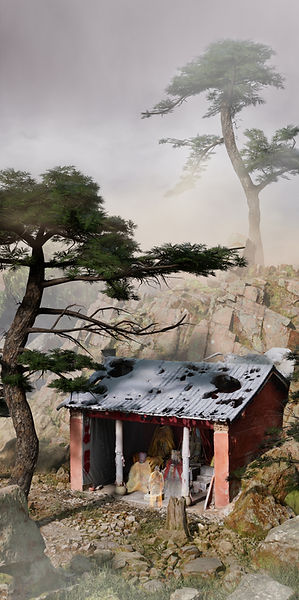
RHIZOMEMIND
A Lab for Mapping Digital Environmentalism(s)


Filmed in stereoscopic 180° on Western University’s campus, Arc of View treats the environment as both score and partner. Moving among sculpture, thresholds, and woodland edges, the performer uses contact, balance, and pause to give the wide field a place to land. The 180° format foregrounds choice: each gesture opens multiple sightlines, and viewers compose the choreography by deciding where to look. With simple, site-specific movement and minimal intervention, the work links body, art, and space, making attention visible and place tangible.
Fang Zhou
China, 2025
14 min 11 secs | VR 360° Film | Foyer installation



Ancient Chinese immortals descend to mortal world seeking employment, competing to secure statues to inhabit—a reflection of social "involution." These statues metaphorically represent social classes: revered temple deities symbolize government authority; trendy office figurines parallel tech industry workers; urban village statues embody small business owners struggling to make ends meet; and neglected rural statues reflect elderly villagers left behind.
The film also highlights the pragmatic persistence of Chinese worship, driven by tangible benefits and amplified by viral online trends. Using 3D scanning and glitch-art aesthetics, Chinese immortals portrays the collision between traditional culture and modern society.



GlitchesAreLikeWildAnimalsInLatentSpace!
Karin + Shane Denson
USA, 2025
pre-recorded video loop | Foyer installation

Inspired in equal parts by glitch-art vernaculars, the chronophotography of Eadweard Muybridge and Étienne-Jules Marey, the cut-up methods of Brion Gysin and William Burroughs, and generative practices from Oulipo to Brian Eno and beyond, our ongoing series GlitchesAreLikeWildAnimalsInLatentSpace! stages an encounter between human imagination and automated image-making. Crucially, this encounter is staged by way of interfacing the invisible archives of generative AI with our own archives of images and texts.